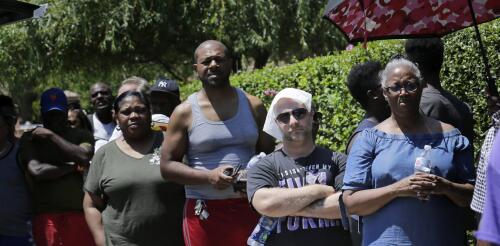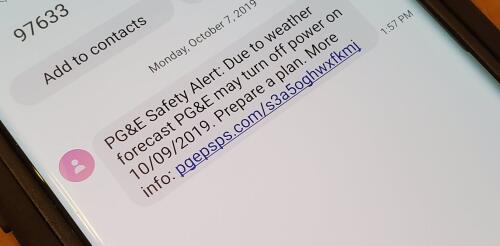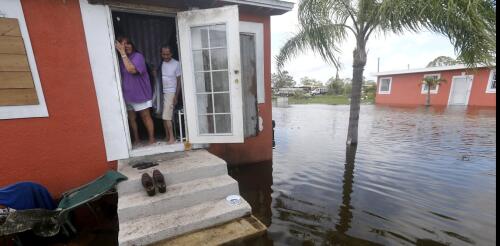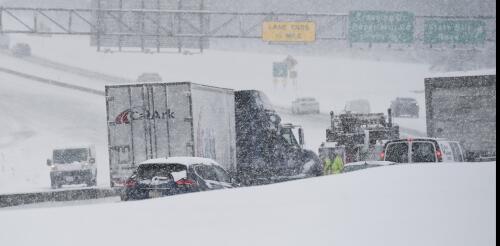Power outages
Many Americans think of power outages as infrequent inconveniences, but that’s quickly changing. Nationwide, major power outages have increased tenfold since 1980, largely because of an aging electrical grid and damage sustained from severe storms as the planet warms. At the same time, electricity demand is rising as the population grows and an increasing number of people use electricity to cool and heat their homes, cook their meals and power their cars. A growing number of Americans also rely on electricity-powered medical equipment, such as oxygen concentrators to help with breathing, lifts for movement and infusion pumps to deliver medications and fluids to their bodies. For older adults and others with health conditions, a loss of power may be more than an inconvenience. It can be life-threatening. We study environmental health, including the effects of extreme heat and storms on people. In a new study, we analyzed data from New York City and the surrounding area to...
The U.S. power grid is the largest and most complex machine ever built. It’s also aging and under increasing stress from climate-driven disasters such as wildfires, hurricanes and heat waves. Over the past decade, power grids have played roles in wildfires in multiple states, including California, Hawaii, Oregon and Minnesota. When wind speeds are high and humidity is low, electrical infrastructure such as aboveground power lines can blow into vegetation or spark against other components, starting a fire that high winds then spread. Under extreme conditions, utilities may opt to shut off power to parts of the grid in their service areas to reduce wildfire risk. These outages, known as public safety power shutoffs, have occurred mainly in California, where wildfires have become larger and more destructive in recent decades. On April 5-6, 2024, Colorado utility Xcel Energy carried out that state’s first public safety power shutoff, cutting power to thousands of custo...
Electricity is essential to just about everyone – rich and poor, old and young. Yet, when severe storms strike, socioeconomically disadvantaged communities often wait longest to recover. That isn’t just a perception. We analyzed data from over 15 million consumers in 588 U.S. counties who lost power when hurricanes made landfall between January 2017 and October 2020. The results show that poorer communities did indeed wait longer for the lights to go back on. A 1-decile drop in socioeconomic status in the Centers for Disease Control and Prevention’s social vulnerability index was associated with a 6.1% longer outage on average. This corresponds to waiting an extra 170 minutes on average for power to be restored, and sometimes much longer. The top map shows the total duration of power outages over eight storms by county. The lower map is a comparison with socioeconomic status taken into account, showing that counties w...
Winter storms can easily become billion-dollar disasters as the snow piles up on interstates and collapses roofs and power lines. Yet, while canceled flights and business interruptions can’t be avoided, what turns a snowstorm into a disaster often can be. I have worked on engineering strategies to enhance disaster resilience for over three decades and recently wrote a book, “The Blessings of Disaster,” about the gambles humans take with disaster risk. Snowstorms stand out for how preventable much of the damage really is. Stay off the roads The easiest storm costs to avoid involve human behavior, including driving during snowstorms. Successfully plowing the snow off a highway requires repeated passes to prevent snow from accumulating to the point where it piles up faster than it can be removed. However, that simple concept breaks down when an accident blocks the lanes, and traffic – including commerce and emergency vehicles – grinds to a halt. W...
Hurricane Helene cut power to more than 4 million homes and businesses as it moved across the Southeast after hitting Florida’s Big Bend region as a powerful Category 4 storm on Sept. 26, 2024. As Helene’s rains moved into the mountains, causing devastating flooding, officials warned that fixing downed utility lines and restoring power would take days to weeks. Electricity is essential to just about everyone – rich and poor, old and young. Yet, when severe storms strike, socioeconomically disadvantaged communities often wait longest to recover. That isn’t just a perception. We analyzed data from over 15 million consumers in 588 U.S. counties who lost power when hurricanes made landfall between January 2017 and October 2020. The results show that poorer communities did indeed wait longer for the lights to go back on. A 10 percentile drop in socioeconomic status in the Centers for Disease Control and Prevention’s social vulnerability index was assoc...




